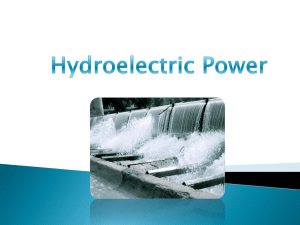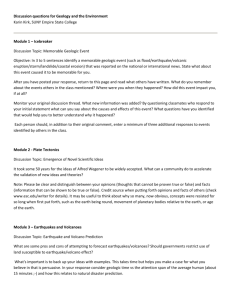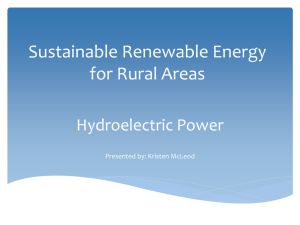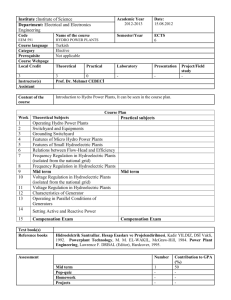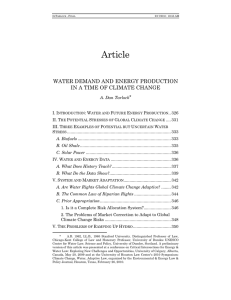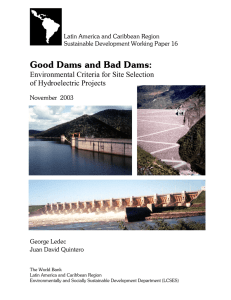What is hydroelectric power?
advertisement
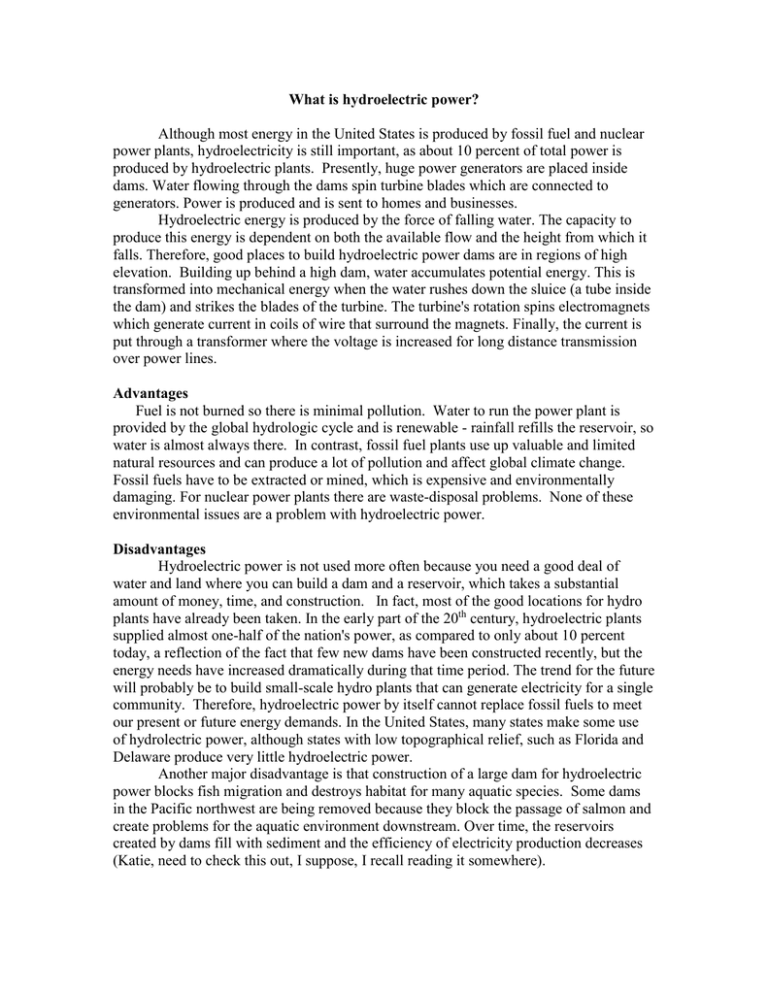
What is hydroelectric power? Although most energy in the United States is produced by fossil fuel and nuclear power plants, hydroelectricity is still important, as about 10 percent of total power is produced by hydroelectric plants. Presently, huge power generators are placed inside dams. Water flowing through the dams spin turbine blades which are connected to generators. Power is produced and is sent to homes and businesses. Hydroelectric energy is produced by the force of falling water. The capacity to produce this energy is dependent on both the available flow and the height from which it falls. Therefore, good places to build hydroelectric power dams are in regions of high elevation. Building up behind a high dam, water accumulates potential energy. This is transformed into mechanical energy when the water rushes down the sluice (a tube inside the dam) and strikes the blades of the turbine. The turbine's rotation spins electromagnets which generate current in coils of wire that surround the magnets. Finally, the current is put through a transformer where the voltage is increased for long distance transmission over power lines. Advantages Fuel is not burned so there is minimal pollution. Water to run the power plant is provided by the global hydrologic cycle and is renewable - rainfall refills the reservoir, so water is almost always there. In contrast, fossil fuel plants use up valuable and limited natural resources and can produce a lot of pollution and affect global climate change. Fossil fuels have to be extracted or mined, which is expensive and environmentally damaging. For nuclear power plants there are waste-disposal problems. None of these environmental issues are a problem with hydroelectric power. Disadvantages Hydroelectric power is not used more often because you need a good deal of water and land where you can build a dam and a reservoir, which takes a substantial amount of money, time, and construction. In fact, most of the good locations for hydro plants have already been taken. In the early part of the 20th century, hydroelectric plants supplied almost one-half of the nation's power, as compared to only about 10 percent today, a reflection of the fact that few new dams have been constructed recently, but the energy needs have increased dramatically during that time period. The trend for the future will probably be to build small-scale hydro plants that can generate electricity for a single community. Therefore, hydroelectric power by itself cannot replace fossil fuels to meet our present or future energy demands. In the United States, many states make some use of hydrolectric power, although states with low topographical relief, such as Florida and Delaware produce very little hydroelectric power. Another major disadvantage is that construction of a large dam for hydroelectric power blocks fish migration and destroys habitat for many aquatic species. Some dams in the Pacific northwest are being removed because they block the passage of salmon and create problems for the aquatic environment downstream. Over time, the reservoirs created by dams fill with sediment and the efficiency of electricity production decreases (Katie, need to check this out, I suppose, I recall reading it somewhere).
